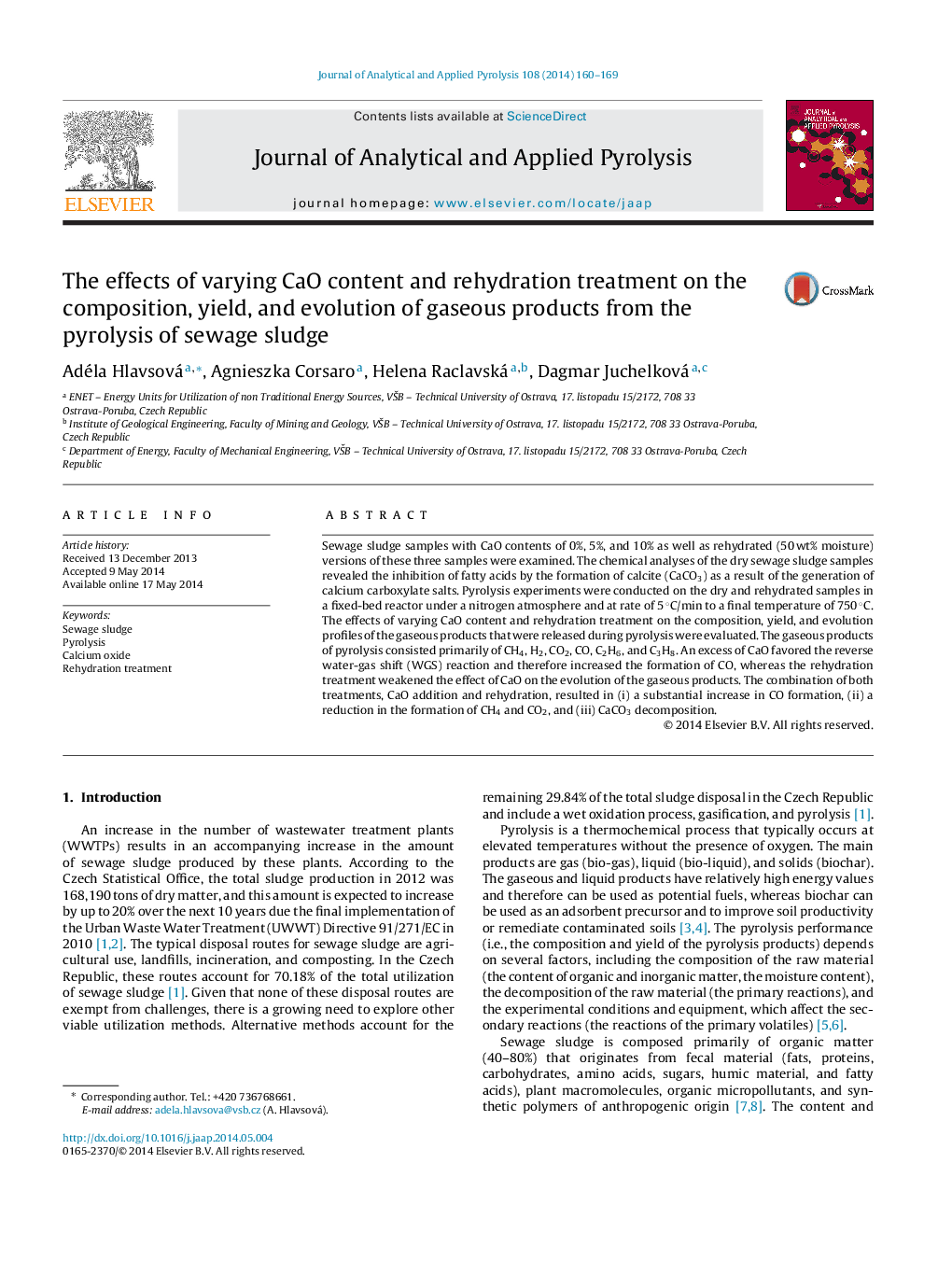| Article ID | Journal | Published Year | Pages | File Type |
|---|---|---|---|---|
| 1196672 | Journal of Analytical and Applied Pyrolysis | 2014 | 10 Pages |
•Fatty acids inhibit calcite formation.•CaO excess increases CO formation in the dry sewage sludge samples.•Rehydration treatment weakens of CaO addition on gases evolution profiles.•Combination of CaO and rehydration treatments decreases CH4 and CO2 formation.•Combination of CaO and rehydration treatments substantially increases CO generation.
Sewage sludge samples with CaO contents of 0%, 5%, and 10% as well as rehydrated (50 wt% moisture) versions of these three samples were examined. The chemical analyses of the dry sewage sludge samples revealed the inhibition of fatty acids by the formation of calcite (CaCO3) as a result of the generation of calcium carboxylate salts. Pyrolysis experiments were conducted on the dry and rehydrated samples in a fixed-bed reactor under a nitrogen atmosphere and at rate of 5 °C/min to a final temperature of 750 °C. The effects of varying CaO content and rehydration treatment on the composition, yield, and evolution profiles of the gaseous products that were released during pyrolysis were evaluated. The gaseous products of pyrolysis consisted primarily of CH4, H2, CO2, CO, C2H6, and C3H8. An excess of CaO favored the reverse water-gas shift (WGS) reaction and therefore increased the formation of CO, whereas the rehydration treatment weakened the effect of CaO on the evolution of the gaseous products. The combination of both treatments, CaO addition and rehydration, resulted in (i) a substantial increase in CO formation, (ii) a reduction in the formation of CH4 and CO2, and (iii) CaCO3 decomposition.
